Npm Is Not Recognized As An Internal Or External Command
1. Overview of the “npm is not recognized as an internal or external command” error
The “npm is not recognized as an internal or external command” error message is encountered when a user attempts to run an npm command, but the system cannot find the npm executable. This error signifies that the npm command is either not installed or not properly configured on the user’s system.
2. Understanding the concept of the npm command and its role in JavaScript development
npm (Node Package Manager) is a package manager for JavaScript that allows developers to easily install, share, and manage dependencies for their projects. It is an essential tool for JavaScript development as it provides a vast ecosystem of libraries and frameworks to enhance productivity and simplify development processes. The npm command is used to interact with the npm registry, install packages, manage project dependencies, and execute various tasks defined in the project’s package.json file.
3. Possible reasons for encountering the “npm is not recognized” error
There are several reasons why the “npm is not recognized” error may occur:
– Node.js and npm are not installed: Before being able to use the npm command, you need to have both Node.js and npm installed on your system. If one or both of them are missing, you will encounter this error.
– Incorrect system PATH configuration: The PATH environment variable is used by the operating system to locate executable files. If the PATH does not include the directory where npm is installed, the system will not be able to find and execute the npm command.
– Corrupted npm installation: Sometimes, the npm installation may get corrupted due to various reasons, resulting in the command not being recognized by the system.
4. Resolving the error on Windows operating system
If you encounter the “npm is not recognized” error on a Windows operating system, you can follow these steps to resolve it:
1. Check if Node.js and npm are installed: Open the command prompt and run the following commands:
“`
node -v
npm -v
“`
If both of these commands produce a version number, it means Node.js and npm are installed. If not, proceed to the next step.
2. Install Node.js and npm: Download the Node.js installer from the official website (https://nodejs.org) and run it. Follow the installation wizard instructions to install Node.js and npm on your system. Once the installation is complete, restart your computer and check if the error is resolved.
3. Configure the system PATH: If Node.js and npm are installed, but the error persists, you need to make sure the installation directory is included in the system’s PATH environment variable. Follow these steps:
– Right-click on the “This PC” or “My Computer” icon on the desktop and select “Properties”.
– In the System Properties window, click on the “Advanced system settings” link.
– In the System Properties dialog, click on the “Environment Variables” button.
– In the Environment Variables dialog, select the “Path” variable under “System variables” and click the “Edit” button.
– Add the following directories to the PATH variable:
– C:\Program Files\nodejs
– C:\Users\
– Click “OK” to save the changes. Close and reopen the command prompt to check if the error is resolved.
5. Resolving the error on macOS operating system
If you encounter the “npm is not recognized” error on macOS, you can follow these steps to resolve it:
1. Check if Node.js and npm are installed: Open the terminal and run the following commands:
“`
node -v
npm -v
“`
If both of these commands produce a version number, it means Node.js and npm are installed. If not, proceed to the next step.
2. Install Node.js and npm: Download the Node.js installer from the official website (https://nodejs.org) and run it. Follow the installation wizard instructions to install Node.js and npm on your system. Once the installation is complete, close and reopen the terminal and check if the error is resolved.
3. Update the system PATH: If Node.js and npm are installed, but the error persists, you need to update the system’s PATH configuration. Open the terminal and run the following command:
“`
nano ~/.bash_profile
“`
This will open the .bash_profile file in the nano text editor. Add the following line at the end of the file:
“`
export PATH=”/usr/local/bin:$PATH”
“`
Press Ctrl + X to exit nano and save the changes. Run the following command to apply the changes:
“`
source ~/.bash_profile
“`
Close and reopen the terminal to check if the error is resolved.
6. Resolving the error on Linux operating system
If you encounter the “npm is not recognized” error on a Linux operating system, you can follow these steps to resolve it:
1. Check if Node.js and npm are installed: Open the terminal and run the following commands:
“`
node -v
npm -v
“`
If both of these commands produce a version number, it means Node.js and npm are installed. If not, proceed to the next step.
2. Install Node.js and npm: Depending on your Linux distribution, you can install Node.js and npm using the package manager. For example, on Ubuntu or Debian, run the following command:
“`
sudo apt-get install nodejs npm
“`
Once the installation is complete, restart the terminal and check if the error is resolved.
3. Update the system PATH (if necessary): If Node.js and npm are installed, but the error persists, you may need to update the system’s PATH configuration. Open the terminal and run the following command:
“`
nano ~/.bashrc
“`
This will open the .bashrc file in the nano text editor. Add the following line at the end of the file:
“`
export PATH=”/usr/local/bin:$PATH”
“`
Press Ctrl + X to exit nano and save the changes. Run the following command to apply the changes:
“`
source ~/.bashrc
“`
Close and reopen the terminal to check if the error is resolved.
7. Additional troubleshooting steps and resources for further assistance
If you have followed the above steps and the “npm is not recognized” error still persists, here are some additional troubleshooting steps you can try:
– Double-check the installation: Make sure that you have installed the latest version of Node.js and npm from the official websites. Sometimes, older versions may not be compatible with certain operating systems or may have known issues.
– Verify the npm command: Open the terminal or command prompt and run the following command to check if the npm command is recognized:
“`
which npm
“`
If the command returns a valid path, it means that npm is installed and accessible. If not, it indicates that npm is not installed or not properly configured.
– Reach out to the community: If you are still unable to resolve the issue, consider seeking assistance from online communities and forums such as Stack Overflow or the official npm community. These platforms have a large community of developers who can provide guidance and solutions to specific issues.
In conclusion, encountering the “npm is not recognized as an internal or external command” error can be frustrating, but with the correct installation and configuration steps, it can be quickly resolved. By following the instructions provided in this article, you should be able to resolve the error and continue working with npm in your JavaScript development projects.
Node / Npm Is Not Recognized As Internal Or External Command
How To Fix Npm Is Not Recognized As An Internal Or External Command?
If you have been working with Node.js and npm (Node Package Manager) for some time, you may have encountered the error message “npm is not recognized as an internal or external command.” This error can be frustrating, especially when you rely on npm to manage your Node.js packages and dependencies. However, there are several reasons why this error occurs and multiple solutions that you can try to fix it. In this article, we will explore these solutions in detail.
### Understanding the Problem
The error message “npm is not recognized as an internal or external command” typically occurs when your computer’s operating system is unable to locate the npm command. This can happen due to various reasons, including:
1. Incorrect installation of Node.js: If Node.js was not installed properly, the associated npm command might not have been added to your system’s PATH (a list of directories that the system searches for executable files).
2. Incorrect or missing environment variables: Environment variables are system variables that store specific values required by the operating system or applications. If these variables are not set correctly or are missing, your system may not be able to locate the npm command.
### Solutions to Fix the Error
Here are some solutions that you can try to resolve the “npm is not recognized as an internal or external command” error:
1. Verify your Node.js installation: First, ensure that Node.js is installed correctly on your system. Open a terminal or command prompt and type `node -v` to check the Node.js version. If the command shows the version number, Node.js is installed properly; otherwise, download and install the latest version from the official Node.js website.
2. Check your PATH variable: The PATH variable contains the list of directories that the operating system searches for executable files. If npm is not recognized, it’s possible that its directory has not been added to the PATH variable. To fix this, locate the directory where npm is installed (commonly C:\Users\your-username\AppData\Roaming\npm or C:\Program Files\nodejs) and add it to the PATH variable. Instructions on how to modify the PATH variable differ across operating systems, but a quick search online will guide you through the process.
3. Restart your computer: After making changes to environment variables or the PATH variable, it is recommended to restart your computer to ensure that the changes take effect.
4. Reinstall Node.js/npm: If the previous solutions didn’t work, you can try reinstalling Node.js/npm. Uninstalling Node.js and reinstalling it using the official installer often resolves any configuration issues that might have caused the error.
5. Use a Node.js version manager: Node.js version managers, like NVM (Node Version Manager) or nvm-windows, allow you to manage multiple versions of Node.js and npm on a single machine. If you frequently encounter issues with npm or need to switch between different Node.js versions, using a version manager might be a helpful solution.
### FAQs
1. What is npm?
npm (Node Package Manager) is a popular package manager for JavaScript and Node.js. It allows developers to manage and share reusable code packages, also known as modules or packages, making it easier to build applications and manage dependencies.
2. Why is npm not recognized as a command?
The error message “npm is not recognized as an internal or external command” occurs when your system cannot locate the npm command. This might happen due to incorrect installation of Node.js, missing environment variables, or issues with the PATH variable.
3. Can I install npm separately from Node.js?
No, npm is bundled with Node.js, and it gets installed automatically when you install Node.js on your system. So, it is not possible to install npm separately from Node.js.
4. What other package managers can I use besides npm?
While npm is the default package manager for Node.js, you can also use yarn, an alternative package manager developed by Facebook. Yarn offers some performance optimizations and additional features, such as improved caching and deterministic dependency resolution.
In conclusion, encountering the “npm is not recognized as an internal or external command” error can impede your development workflow. However, by following the solutions outlined in this article, you should be able to resolve the error and continue utilizing npm for managing your Node.js projects efficiently. Remember to check your Node.js installation, verify your system’s environment variables, and use tools like the PATH variable or a version manager when necessary.
How To Install Npm In Cmd?
Npm (Node Package Manager) is a popular package manager for JavaScript which allows developers to easily install, manage, and share reusable JavaScript code packages. In order to use npm, it is essential to have it installed in your command prompt (cmd). This article will guide you through the step-by-step process of installing npm in cmd on a Windows operating system.
Step 1: Install Node.js
Before installing npm, you will need to have Node.js installed on your system. Node.js is a runtime environment that allows you to run JavaScript applications outside the browser. The npm package manager is installed automatically when you install Node.js.
To install Node.js, follow these steps:
1. Open your browser and navigate to the official Node.js website (https://nodejs.org/).
2. On the homepage, click on the “Downloads” tab.
3. You will be presented with two options: LTS (Long Term Support) and Current. It is recommended to choose the LTS version for stability unless you have a specific reason to use the Current version.
4. Once you have chosen the appropriate version, click on the corresponding installer to download it.
5. Run the downloaded installer and follow the on-screen instructions to install Node.js on your system.
Step 2: Verify Node.js Installation
After the installation is complete, you can verify if Node.js is successfully installed by opening your command prompt (cmd) and typing the following command:
“`
node -v
“`
If Node.js is installed correctly, it will display the installed version of Node.js. For example, something like “v14.17.0” will be displayed.
Step 3: Update npm (optional)
By default, when you install Node.js, it comes bundled with npm. However, it is recommended to update npm to the latest version to ensure you have access to the latest features and bug fixes.
To update npm, open your command prompt (cmd) and type the following command:
“`
npm install npm@latest -g
“`
This command will update npm to the latest version available.
Step 4: Verify npm Installation
After updating npm (or if you choose not to update), you can verify if npm is successfully installed by typing the following command in your command prompt (cmd):
“`
npm -v
“`
If npm is installed correctly, it will display the installed version of npm. For example, something like “7.17.0” will be displayed.
FAQs:
Q: Can I install npm without installing Node.js?
A: No, you cannot install npm without first installing Node.js. Node.js includes npm by default, so it is essential to have Node.js installed before using npm.
Q: Is it necessary to update npm after installing Node.js?
A: While it is not necessary to update npm after installing Node.js, it is recommended to do so to ensure access to the latest features and bug fixes.
Q: Can I install npm using a package manager like Homebrew (for macOS) or Chocolatey (for Windows)?
A: Yes, you can install Node.js and npm using package managers like Homebrew or Chocolatey. However, the steps mentioned in this article are specifically for installing npm using the official Node.js installer.
Q: I have installed Node.js and npm, but I’m still unable to use npm in cmd. What should I do?
A: Ensure that the installation paths for Node.js and npm are added to your system’s environment variables. You can check this by typing “node -v” and “npm -v” in your command prompt (cmd). If these commands are not recognized, you may need to add the installation paths manually.
Installing npm in cmd is a straightforward process that requires installing Node.js followed by verifying the installations of both Node.js and npm. With npm installed, developers can easily manage their JavaScript dependencies and increase their productivity in developing JavaScript applications.
Keywords searched by users: npm is not recognized as an internal or external command NodeJS, npm’ is not recognized vs code, Install npm, Download nodejs, Npm is not recognized as an internal or external command cmd, The term ‘npm’ is not recognized as the name of a cmdlet, Install npm Windows, ‘node’ is not recognized as an internal or external command, operable program or batch file.
Categories: Top 55 Npm Is Not Recognized As An Internal Or External Command
See more here: nhanvietluanvan.com
Nodejs
At its core, Node.js uses the V8 JavaScript engine developed by Google for its Chrome browser. It provides a runtime environment for executing JavaScript code on the server-side, allowing developers to build high-performance, event-driven, and scalable applications. Node.js operates on a non-blocking, event-driven architecture, which means that it can handle concurrent requests efficiently without being blocked by I/O operations.
One of the main advantages of using Node.js is its ability to handle a large number of concurrent connections with minimal resources. This makes it ideal for building applications that require real-time data streaming, such as chat applications, real-time collaboration tools, and gaming servers. Its event-driven architecture ensures that the server doesn’t get overwhelmed by multiple requests and can handle them in an efficient and timely manner.
Node.js also comes with an extensive package ecosystem, known as npm, which is the largest ecosystem of open-source libraries in the world. npm allows developers to easily install, manage, and share reusable modules of code, making it easier to build complex applications without reinventing the wheel. This vast library of pre-built modules significantly speeds up the development process and promotes code reuse.
Furthermore, Node.js is built with JavaScript, a language that is highly popular among developers, making it easier for front-end developers to transition to server-side development. This allows for better communication and collaboration between front-end and back-end developers, reducing the development cycle time and improving overall productivity.
Node.js is widely adopted by various tech giants and startups alike. Companies like Netflix, LinkedIn, Uber, PayPal, and many others have leveraged the power of Node.js to build high-performing and scalable applications. Its flexibility and scalability make it suitable for various use cases, including web servers, microservices, APIs, and IoT applications.
As with any technology, Node.js also has its limitations. Since it is a single-threaded runtime environment, it is not well-suited for CPU-intensive tasks. CPU-bound operations can block the event loop, reducing the performance and responsiveness of the application. However, this limitation can be mitigated by delegating CPU-bound tasks to separate worker threads or using additional processes.
When it comes to FAQs about Node.js, let’s address some common questions:
Q: Is Node.js only for building web servers?
A: No, Node.js can be used to build a wide range of applications, including web servers, microservices, APIs, real-time applications, command-line tools, desktop applications, and more.
Q: Is Node.js suitable for large-scale enterprise applications?
A: Yes, Node.js is highly scalable and can handle a large number of concurrent connections efficiently. It has been proven to be suitable for building enterprise-grade applications.
Q: Is Node.js only for JavaScript developers?
A: While Node.js is built using JavaScript, it does not mean that only JavaScript developers can use it. Developers from other programming backgrounds can also learn and leverage Node.js for their projects.
Q: How does Node.js handle database operations?
A: Node.js provides a non-blocking, asynchronous I/O model, which allows for efficient handling of database operations. By utilizing the appropriate database drivers or ORMs (Object Relational Mappers), developers can seamlessly integrate databases with Node.js applications.
Q: Is Node.js secure?
A: Like any other technology, the security of Node.js applications depends on how they are designed, implemented, and maintained. Node.js provides various security features, such as TLS (Transport Layer Security), authentication mechanisms, and secure coding practices, which can be used to build secure applications.
In conclusion, Node.js has revolutionized server-side development with its lightweight yet powerful runtime environment. Its event-driven architecture, scalability, and extensive package ecosystem make it a favorable choice for building high-performing applications. With its wide adoption by industry leaders and startups, Node.js is expected to continue growing and shaping the future of web development.
Npm’ Is Not Recognized Vs Code
Introduction:
Visual Studio Code (VS Code) is a widely used source code editor developed by Microsoft. It provides a rich and customizable environment for writing code in various programming languages. One of the key features of VS Code is its extensibility through extensions, which allow developers to enhance their coding experience. However, sometimes users may encounter the error message “‘npm’ is not recognized” when working with Node Package Manager (npm) in VS Code. In this article, we will explore various reasons behind this error and provide step-by-step solutions to resolve it.
Reasons behind the error:
1. PATH variable not set: The ‘npm’ command is not recognized in VS Code when the PATH environment variable is not configured. The PATH variable is responsible for locating executables, including npm, on your system. Without the correct PATH configuration, VS Code cannot find the npm executable.
2. npm not installed: Another common reason is that npm is not installed on your system. npm is a package manager for JavaScript and is used to install dependencies and manage project dependencies.
3. VS Code terminal not configured: Sometimes, the ‘npm’ is not recognized error occurs because the integrated terminal in VS Code is not properly configured. The terminal needs to be configured with the correct shell and PATH to work seamlessly with npm.
Solutions to resolve the error:
1. Verify npm installation: Before proceeding with any troubleshooting steps, ensure that npm is correctly installed on your system. Open a terminal outside of VS Code (such as Command Prompt or PowerShell) and type ‘npm’. If npm is installed, it will display the version number. If it is not installed, follow the official npm installation guide to get npm up and running.
2. Configure the PATH variable: If npm is correctly installed but still not recognized in VS Code, you need to configure the PATH variable. To do this, follow these steps:
– Open the Start menu and search for “Environment Variables”
– Select “Edit the system environment variables”
– In the System Properties window, click on “Environment Variables”
– Under the “System variables” section, find the “Path” variable and select “Edit”
– Add the path to the npm installation folder (e.g. C:\Users\YourUserName\AppData\Roaming\npm) to the list of paths.
3. Verify VS Code terminal settings: Check if the integrated terminal in VS Code is configured correctly. To do this, follow these steps:
– Open VS Code and go to “File” > “Preferences” > “Settings” (or use the keyboard shortcut Ctrl + ,)
– In the settings panel, search for “terminal.integrated.shell.windows” (for Windows users) or “terminal.integrated.shell.linux” (for Linux users)
– Ensure the value is set to the correct shell path (e.g., cmd.exe for Windows or bash for Linux)
– Restart VS Code and try running npm commands in the integrated terminal.
4. Install and use Node.js extension: The Node.js extension for VS Code provides enhanced features and support for working with Node.js projects. Install the Node.js extension from the VS Code marketplace and check if it resolves the error. The extension provides a dedicated terminal for running npm commands and other Node.js specific features.
5. Reinstall VS Code: If none of the above solutions work, there might be an issue with your VS Code installation. Uninstall VS Code, ensuring that all associated files and configurations are removed. Then, visit the official VS Code website and download the latest version of the editor. Install it and reconfigure the necessary settings.
FAQs:
Q1. What is Node Package Manager (npm)?
A1. npm is a command-line tool and package manager for JavaScript. It allows users to install, publish, and manage dependencies for Node.js projects.
Q2. Can I use npm outside of VS Code?
A2. Yes, npm can be used outside of VS Code. It is a standalone tool that can be run from any terminal or command prompt.
Q3. Why is the PATH variable important?
A3. The PATH variable tells the operating system where to find executables. Without a correctly configured PATH variable, the system cannot locate npm, resulting in the error “‘npm’ is not recognized”.
Q4. Does the error only occur in Windows?
A4. No, the error can occur in any operating system if the necessary configurations are not in place. However, the solutions provided in this article are focused on Windows systems.
Conclusion:
Encountering the error “‘npm’ is not recognized” in VS Code can be frustrating, but the issue can usually be resolved by ensuring npm is installed correctly, configuring the PATH variable, and verifying the VS Code terminal settings. Following the step-by-step solutions provided in this article should help resolve the error and allow you to continue your development workflow smoothly with npm in VS Code. Remember to keep your software and extensions up to date for optimal performance.
Images related to the topic npm is not recognized as an internal or external command

Found 22 images related to npm is not recognized as an internal or external command theme

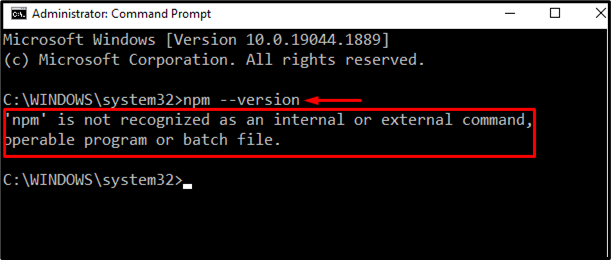



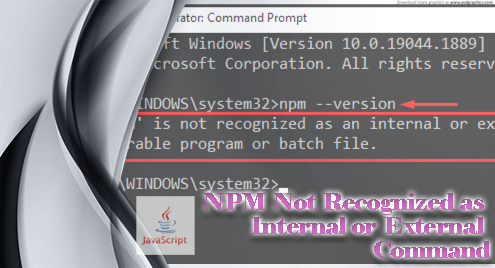
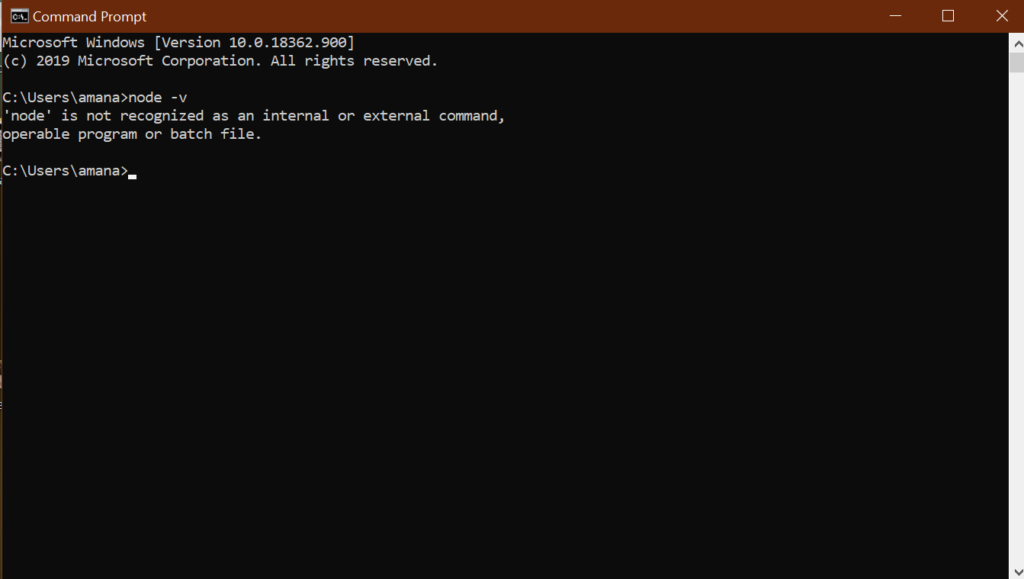

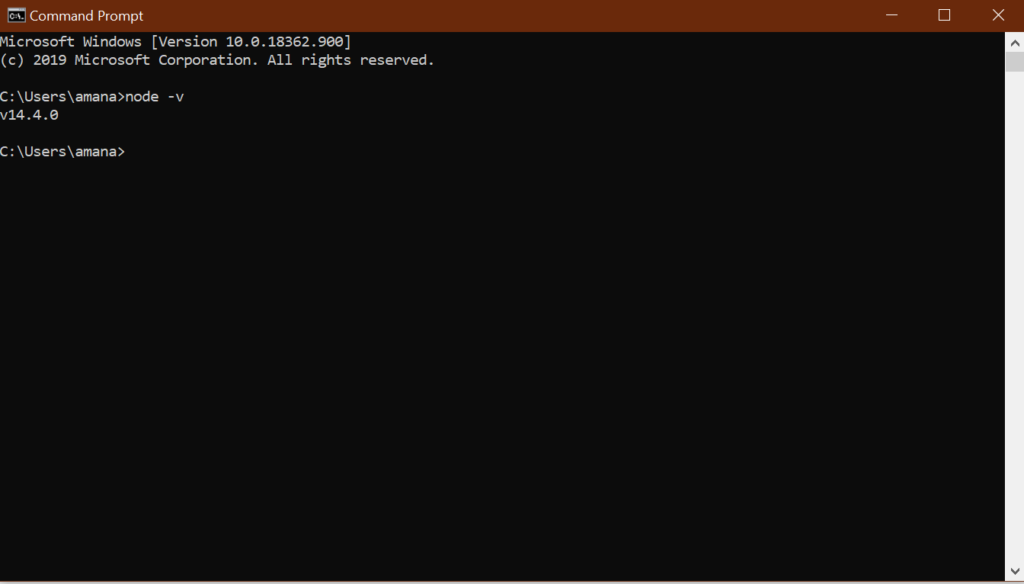






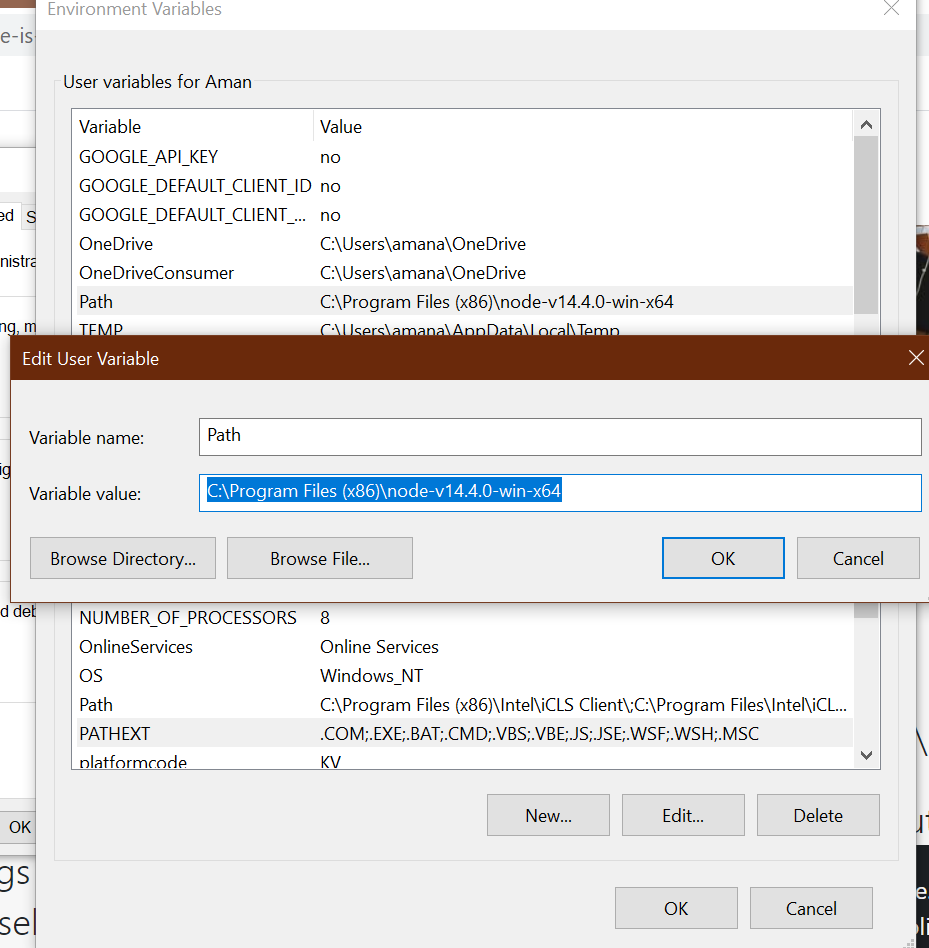
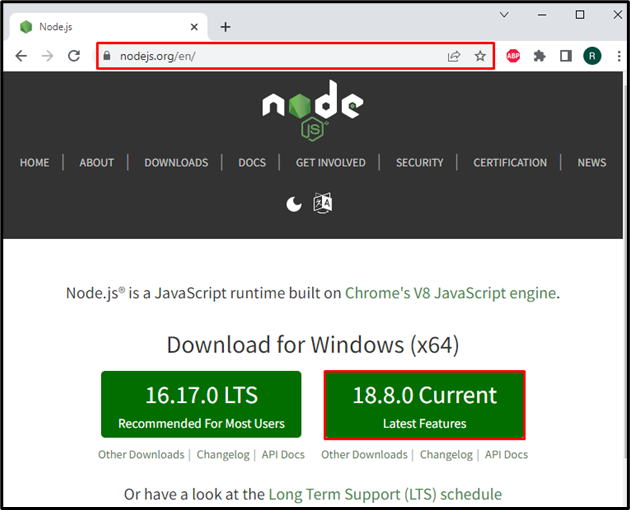

![SOLVED: npm / node is not recognized as an internal or external command Node.js [100% Work] - YouTube Solved: Npm / Node Is Not Recognized As An Internal Or External Command Node.Js [100% Work] - Youtube](https://i.ytimg.com/vi/BOlu8BGSjNI/maxresdefault.jpg)
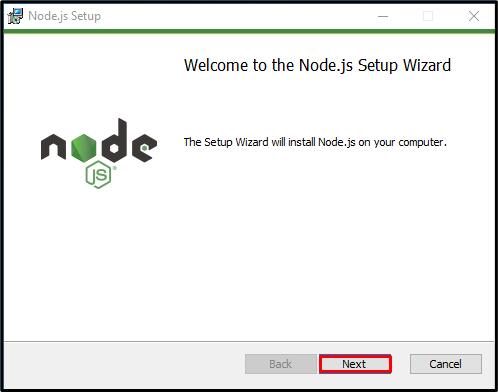

![Node' Is Not Recognized As An Internal Or External Command, Operable Program Or Batch File ❓ [How To Solve] Node' Is Not Recognized As An Internal Or External Command, Operable Program Or Batch File ❓ [How To Solve]](https://love2dev.com/img/edit-path-variable.png)
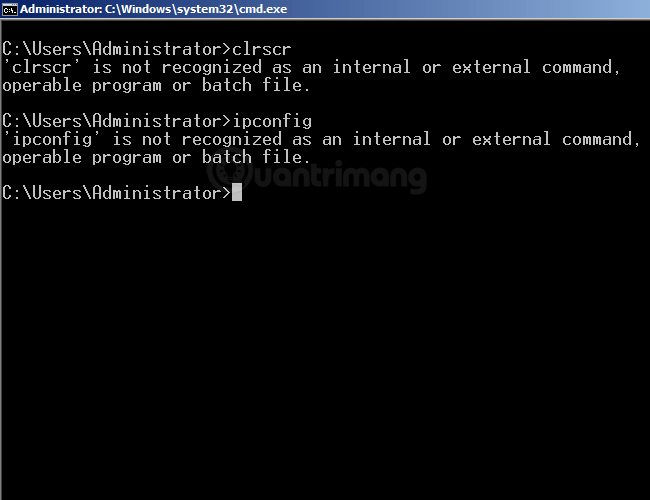
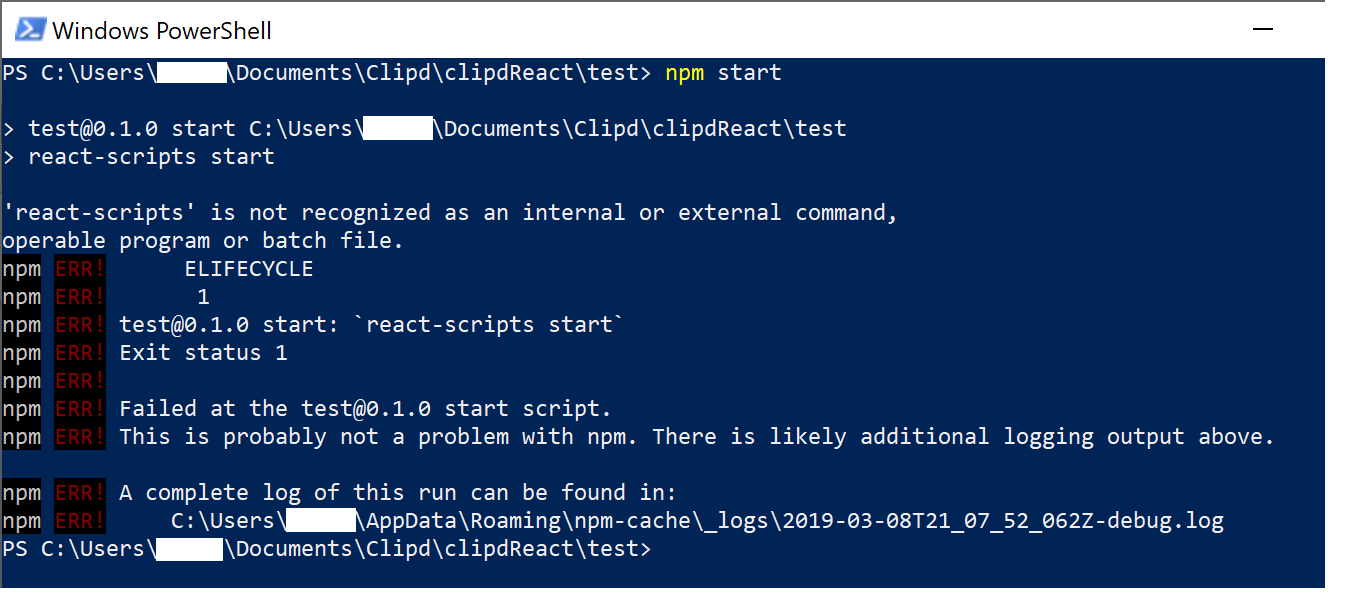
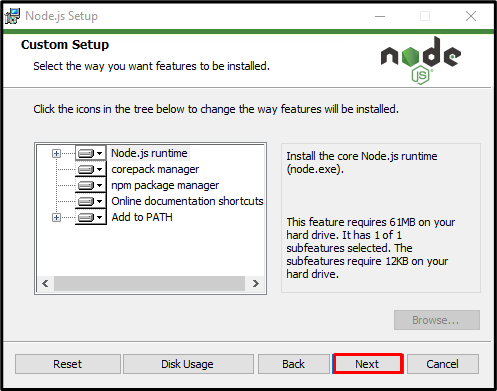


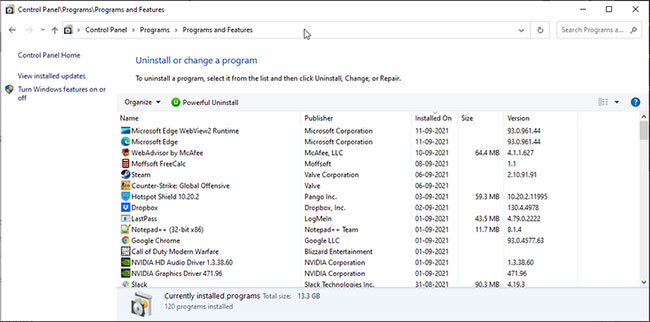

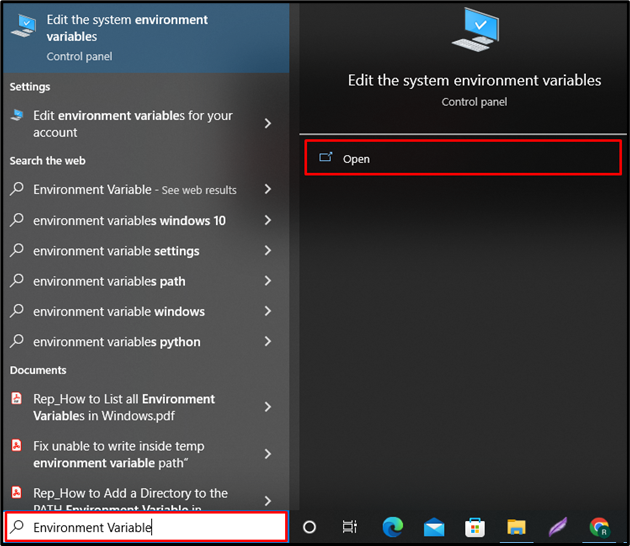

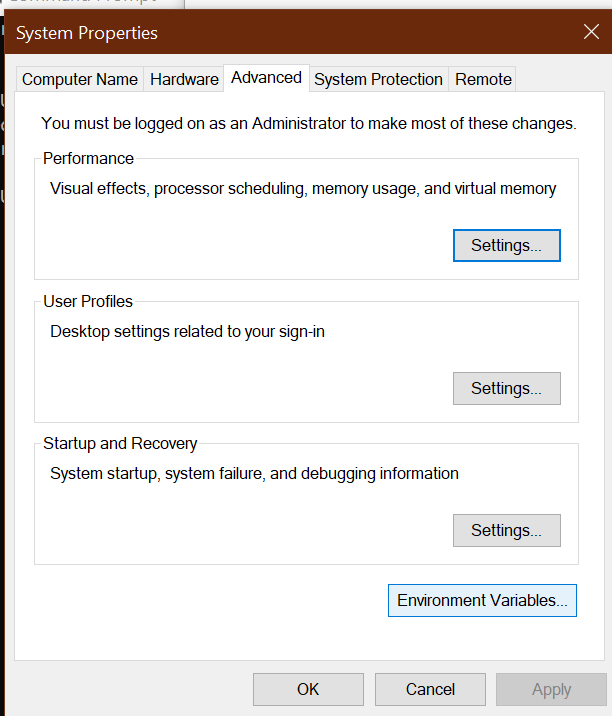
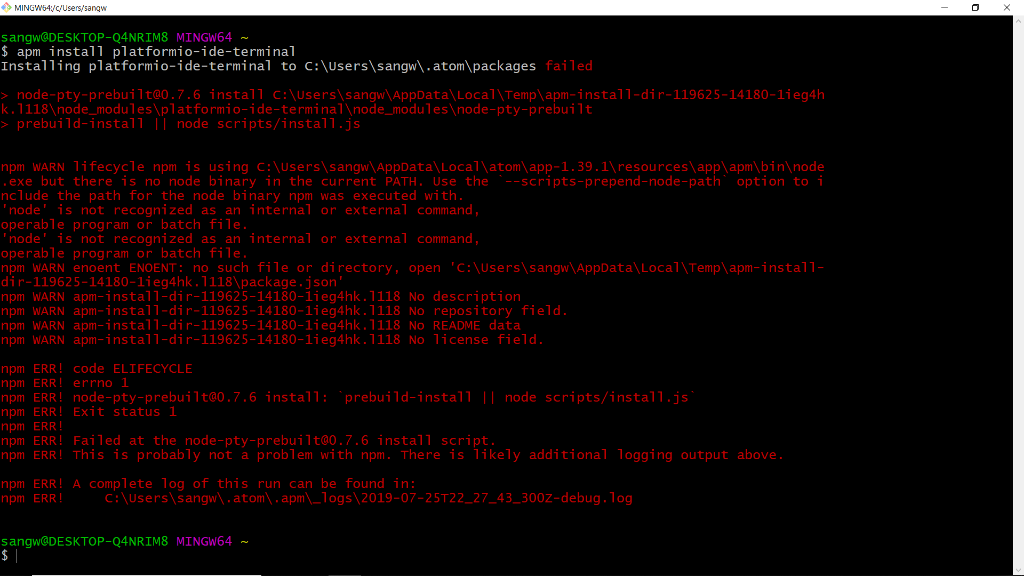









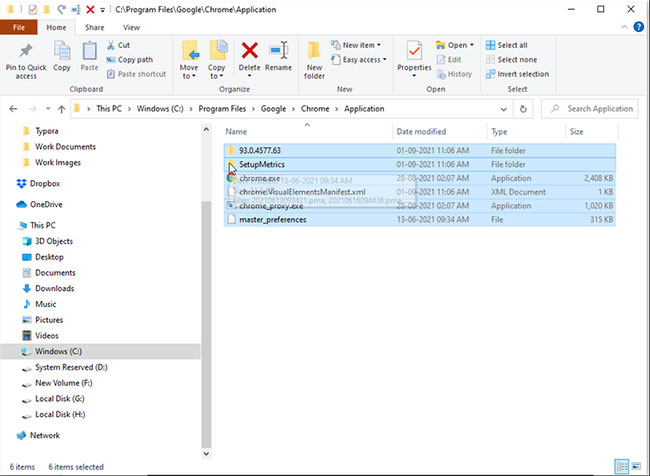
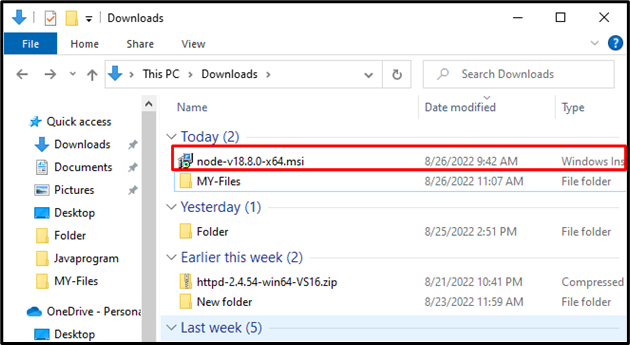






Article link: npm is not recognized as an internal or external command.
Learn more about the topic npm is not recognized as an internal or external command.
- ‘npm’ is not recognized as internal or external command …
- NPM Not Recognized as Internal or External Command
- NPM Not Recognized as Internal or External Command
- How to Install Node.js and NPM on Windows and Mac? – Radixweb
- npm command not found | Career Karma
- 5 Ways to Fix the “Not Recognized as an Internal or External Command …
- ‘npm’ is not recognized as an internal or external command
- ‘npm’ is not recognized as internal or external command
- Fixing ‘npm’ is not recognized error – sebhastian
- How to Fix ‘npm is not recognized’ Error in Windows 10
- NPM Is Not Recognized: A Detailed Guide on This Error
- The ‘npm’ is not recognized as an internal or external …
- Solving “npm not recognized as an internal or external …
See more: https://nhanvietluanvan.com/luat-hoc/